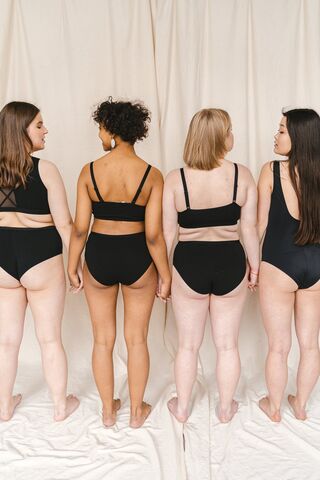Body Image
Acceptance Can Provide Relief for Body Image-Related Disorders
You don't have to love the way you look.
Posted March 8, 2022 Reviewed by Ekua Hagan
Key points
- Trying to change aspects of one's appearance or how one feels about them can backfire.
- Learning to accept one's own thoughts and feelings can provide relief from suffering.
- One step towards acceptance is recognizing that other people may have differing views.
- Acceptance and Commitment Therapy is one of several effective treatments for body image-related disorders.
Trying to feel good about the way you look can often do just the opposite. Giving yourself compliments in the mirror often feels like lying and just leads to more disappointment. Working out or dieting offers the promise of feeling better, but regularly fails to change body image even when weight loss is achieved.

Popular culture tells us to love ourselves and have body positivity. But for many, the promise of happiness that comes with self-love makes it feel even worse to not have it.
Luckily, there’s another way.
You don’t have to love the way you look. But you can learn to accept it. Acceptance does not mean to love, like, or approve. It simply means to accept.
When working with clients that have poor body image, I often ask them to define what they are attracted to. Inevitably, they feel they do not meet that definition. That’s okay. They don’t have to be attracted to their own image.
I then ask them if it’s possible for other people to be attracted to their body, despite the fact they are not attracted to it. The answer is yes. Sometimes they may have to search for some evidence to believe this fact. Below are examples of some questions I may ask to help them find evidence:
- Does their partner say they are attracted to them?
- Has anyone ever complimented their body?
- Can they think of anyone else, such as a celebrity, who shares physical traits with them and who others find attractive?
- Has anyone expressed interest in them before?
- Was there ever a time that they did find their image to be attractive?
The goal is to learn to accept that other people have different opinions. You can find yourself unattractive, while someone else finds you attractive. These realities don't have to be in agreement. You might even learn to allow yourself to accept compliments from a significant other without arguing with them out loud or in your own mind.
You may not like your nose, your body shape, or your height. Rather than try to change these aspects of yourself or try to escape the negative thoughts and feelings about them, you can learn to live with them. You don't have to like those things to be a healthy person or for someone else to like you.
Acceptance and commitment therapy for body image-related disorders
For treatment-resistant cases of body image-related disorders, such as body dysmorphic disorder, bulimia, and anorexia, acceptance-based treatment may be an effective option for finding relief. Acceptance and commitment therapy, or ACT, encourages tolerating thoughts and feelings rather than trying to change them. Research shows that this approach can be effective in reducing the severity and frequency of symptoms.
By learning to accept thoughts and feelings related to your own body, you can then shift your attention to what you can control. For example, you might choose to focus on other values and shift your attention onto them. A lot of time and energy tends to go towards fighting our own negative thoughts and self-image. This is time and energy that could be well spent on other pursuits that may be more productive.
If you are struggling with a body image-related disorder, please seek the help and guidance of a therapist specializing in these conditions. There is hope and there are multiple treatment options available. Treatment methods such as ACT which focus on acceptance may not eliminate negative thoughts and feelings, but it does make them easier to deal with and can be a step in the right direction.
To find a therapist, please visit the Psychology Today Therapy Directory.
References
Dehbaneh, M. A. (2018). Effectiveness of acceptance and commitment therapy in improving interpersonal problems, quality of life, and worry in patients with body dysmorphic disorder. Electronic Journal of General Medicine, 16(1). https://doi.org/10.29333/ejgm/93468
Linde, J., Rück, C., Bjureberg, J., Ivanov, V. Z., Djurfeldt, D. R., & Ramnerö, J. (2015). Acceptance-Based Exposure Therapy for Body Dysmorphic Disorder: A Pilot Study. Behavior therapy, 46(4), 423–431.
Selinger, A., & Neziroglu, F. (n.d.). Act with CBT for BDD: More than alphabet soup. ACT With CBT for BDD: More Than Alphabet Soup | Anxiety and Depression Association of America, ADAA. Retrieved March 8, 2022, from https://adaa.org/understanding-anxiety/body-dysmorphic-disorder/treatme…




